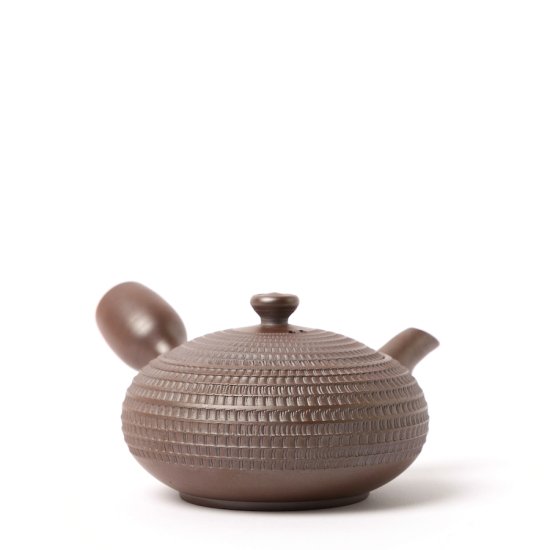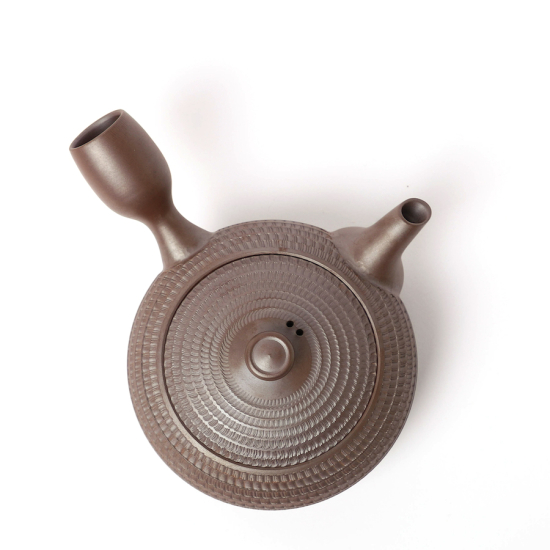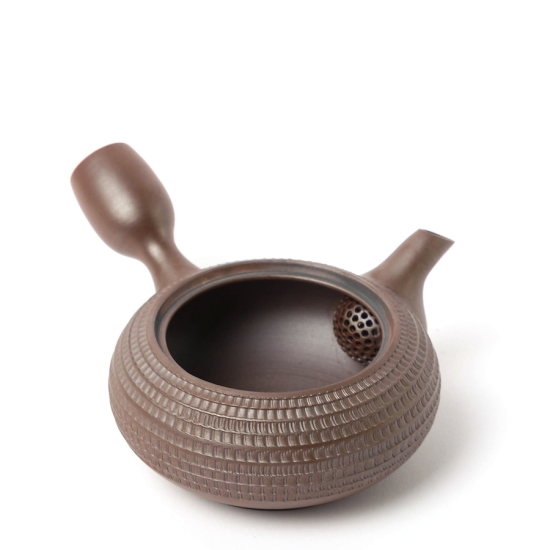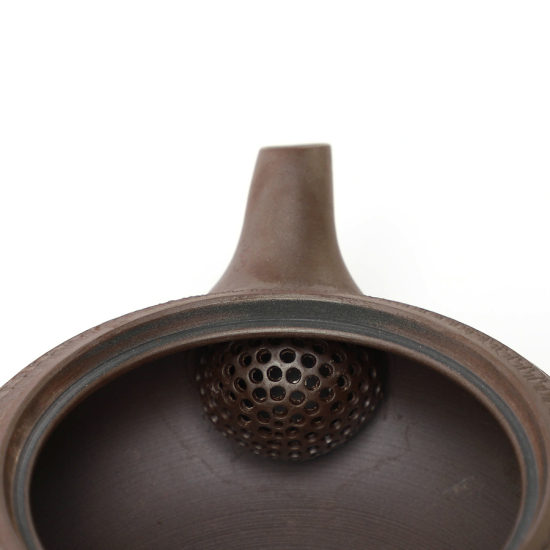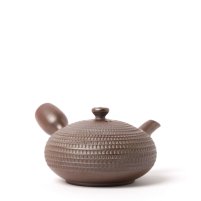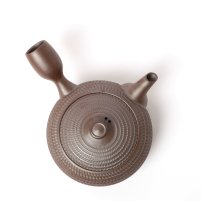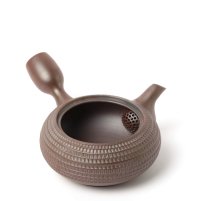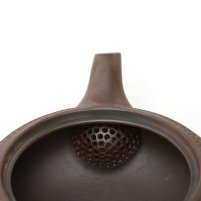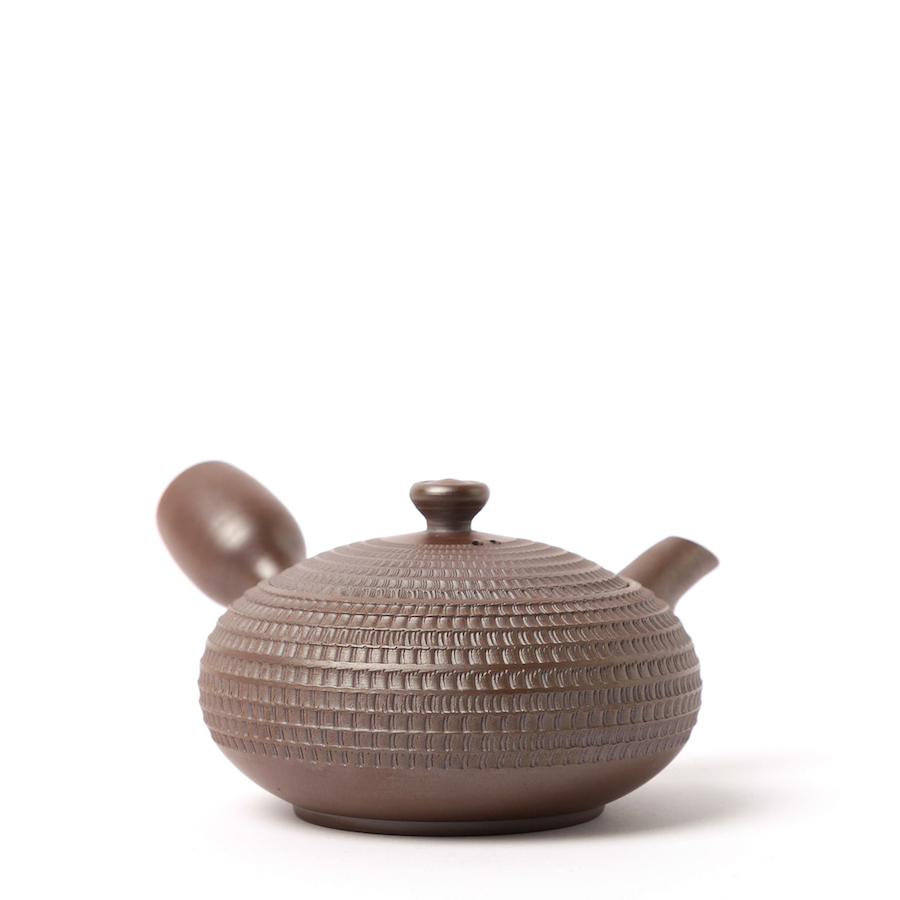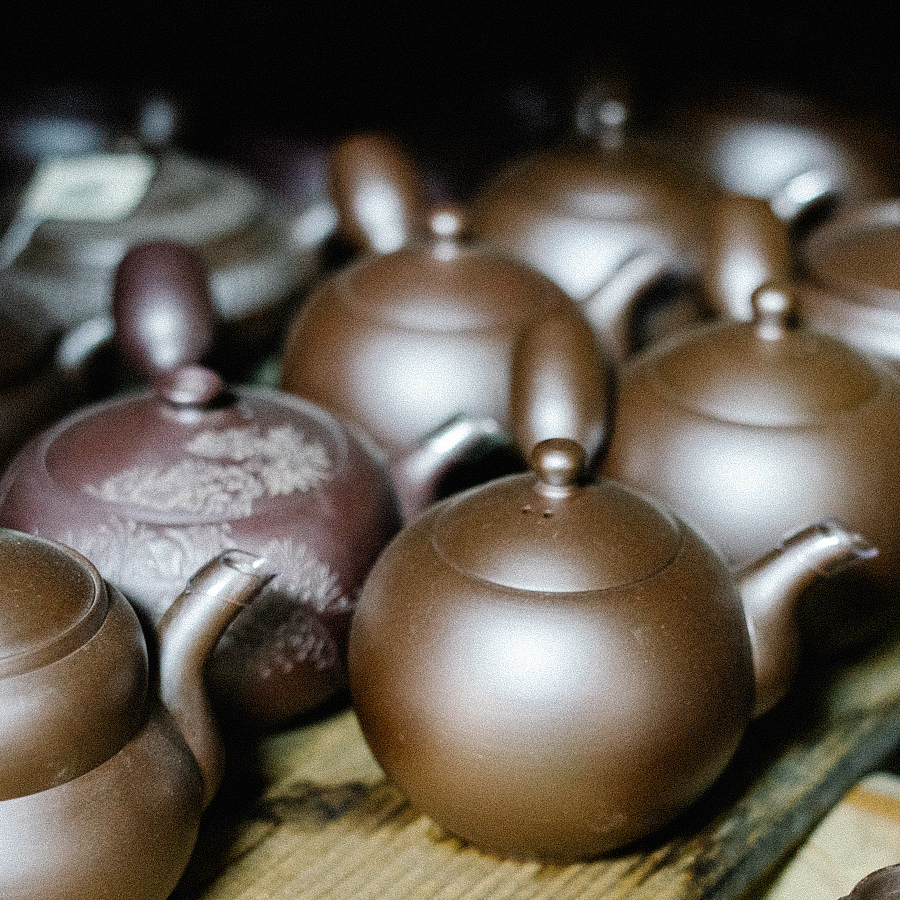Shidei banko will quickly develop a patina and become more glossy with use. It is natural that fingerprints will stand out on the surface in the first few months but these will begin to subside as the surface starts to develop a deep lustre. When cleaning, only use water and a soft cloth, then leave to air dry naturally. Do not use detergents or put in the dishwasher. Hard water may cause limescale deposits to develop, in which case rinse with soft bottled water, then wipe with a soft cloth.
Banko Kyusu
Hiramaru Sen Biri 平丸線ビリ
SKU
4111
Yoshi En has recently grown out of Sunday Natural to become an independent premium tea store. As part of this transition, some products may still be shipped in Sunday Natural packaging.
| Type | Side-handle Banko-yaki kyusu |
| Origin | Yokkaichi, Mie Prefecture, Japan |
| Maker | Tachi |
| Volume | 260ml |
| Dimensions | Ø10.5 x 4.9cm |
| Weight | 228g |
| Material | Ceramic |
| Decoration | Biri/Tobikanna |
| Finish | Unglazed (yakishime) |
| Manufacture | Handmade on potter's wheel (rokuro) |
| Strainer | Built-in ceramic debeso filter |
| Artist's Stamp | On base |
| Packaging | Signed wooden box (kiribako) |
| Each item is handmade therefore patterning, colour and size may vary slightly. |
In stock



